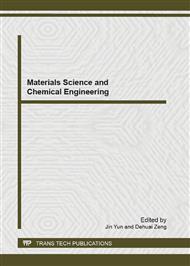p.476
p.480
p.484
p.490
p.496
p.502
p.507
p.513
p.519
Effect of Acceleration Voltage on Properties of Nitrogen-Doped TiO2 Thin Films
Abstract:
Titanium dioxide has been used for environmental applications. However, pure TiO2 has low photocatalytic efficiency outdoors because of its large energy band gap. Higher nitrogen-doping level would have lower band-gap energy and it would make it possible to improve the utilization ratio of solar energy. Heavily nitrogen-doped TiO2 could be obtained by using ion beam assisted deposition (IBAD) technique. Acceleration voltage is a very important parameter of IBAD technique and will affect the processes of depositing thin film. Under the given experiment condition, acceleration voltage had little effect on the structure and absorbance spectra of the obtained nitrogen-doped titanium oxide thin films, but had great effect on the deposition rate, composition and surface morphology of the thin films. When the accelerate voltage was 250V, the deposition rate was the highest (about 9.0 nm/min), the resulting TiO2-xNx films contained nitrogen levels up to x =0.45, the structures were mostly crystalline anatase and the amount of shift was observed about 500 nm. The optimum acceleration voltage is about 250V under the given condition.
Info:
Periodical:
Pages:
496-501
Citation:
Online since:
May 2013
Authors:
Keywords:
Price:
Сopyright:
© 2013 Trans Tech Publications Ltd. All Rights Reserved
Share:
Citation:


